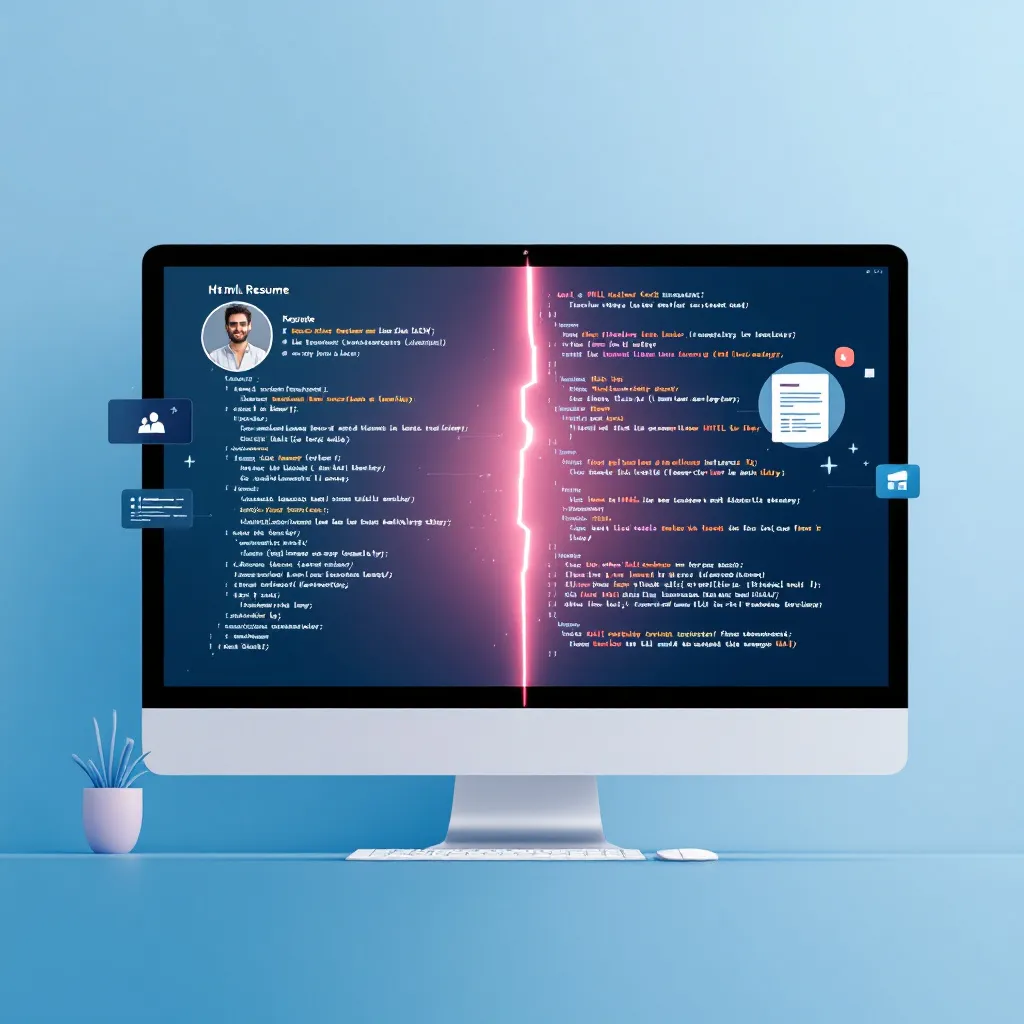In today’s competitive tech job market, your resume is often the first impression you make on potential employers. For web developers, effectively showcasing technical skills, project experience, and professional achievements requires a strategic approach. This guide will help you craft a resume that gets past Applicant Tracking Systems (ATS) and impresses hiring managers.
Key Components of an Effective Web Developer Resume
Every standout web developer resume should include these essential sections:
-
Professional Profile: Start with a concise, achievement-focused summary highlighting your core competencies. For example: “Senior full-stack developer with 8+ years leading cross-functional teams in scalable web app development” rather than generic statements about seeking opportunities.
-
Technical Skills Section: Create a dedicated section for your programming languages, frameworks, and tools. Resume examples show this is crucial for web developers, as hiring managers often scan for specific technologies first.
-
Work Experience: Focus on quantifiable achievements rather than just listing responsibilities. Instead of “Developed websites,” try “Improved site load speed by 40% using Next.js optimization techniques” as recommended by BeamJobs Web Developer Resume Examples.
-
Project Highlights: Include 3-5 key projects with technologies used and measurable outcomes. For example: “Built a React-based e-commerce platform serving 10k+ monthly users with 99.9% uptime.”
-
Education/Certifications: List relevant degrees and technical certifications concisely.
The resume formatting should prioritize readability with consistent spacing, clear section headers, and a clean design that makes scanning easy for busy recruiters.
Showcasing Technical Skills Effectively
Your technical skills section deserves special attention as it’s often the most scrutinized part of a web developer resume.
Skills Categorization Strategies
Group your skills logically to demonstrate breadth and depth:
Frontend: React, Vue.js (Advanced), Angular (Proficient), HTML5/CSS3 (Expert)
Backend: Node.js, Express (Advanced), Python/Django (Familiar), PHP (Proficient)
Databases: MongoDB, PostgreSQL, MySQL
Tools & Platforms: Git, Docker, AWS, Firebase
According to the ResumeBuilder Technical Skills Guide, it’s important to tailor your skills section to the job description. For a front-end position, expand your frontend technologies section while keeping backend skills more concise.
Avoid listing soft skills in this section – save those for your work experience descriptions where you can provide context. Focus on hard technical skills that directly relate to web development.
Integrating Your Portfolio and GitHub Projects
Your code speaks volumes about your abilities. Make it easy for employers to see your work:
- Add your portfolio link prominently in the header or contact section of your resume.
- Include a direct link to your GitHub profile.
- For 2-3 standout projects, include specific repository links with brief descriptions.
For example:
PORTFOLIO HIGHLIGHTS
• E-commerce Platform (React/Node.js) - Implemented cart functionality with 30% higher conversion rate
GitHub: github.com/username/project (Live demo: projecturl.com)
According to Tiiny.host Portfolio Linking Guide, QR codes can be particularly effective on printed resumes, allowing interviewers to quickly access your work.
Free vs. Premium Web Developer Resume Templates
When choosing between free and paid resume template options, consider these differences:
| Feature | Free Templates | Premium Templates |
|---|---|---|
| Customization | Limited color/font options | Full design control |
| ATS Optimization | Basic parsability | Advanced keyword optimization |
| Branding | Often includes platform watermarks | Branding-free exports |
| Features | Basic layouts | Multi-page support, AI content suggestions |
Free templates from platforms like GitHub, Google Docs, or Canva can be sufficient for many developers. However, premium templates from services like ResuFit offer enhanced ATS optimization, which can be particularly valuable in competitive markets.
Template Selection Based on Developer Specialty
Your specialty should influence your template choice:
- Frontend developers benefit from templates that showcase visual design sensibilities while maintaining clean structure
- Backend developers should prioritize templates that emphasize technical architecture and system design achievements
- Full-stack developers need balanced templates that demonstrate both technical depth and design awareness
Cool looking resumes with moderate visual elements can help you stand out, but be careful not to sacrifice ATS compatibility for design flourishes.
Resume Customization for Different Job Applications
One-size-fits-all approaches rarely succeed in web development job searches. For each application:
- Analyze the job description for key technologies and requirements
- Reorder your skills section to prioritize the most relevant technologies
- Modify project descriptions to highlight aspects most relevant to the specific role
- Adjust your professional summary to align with the company’s stated needs
American resume format samples typically follow a chronological structure, but you can emphasize different aspects of your experience based on job requirements.
AI-powered tools like ResuFit can analyze job descriptions and automatically tailor your resume to match specific requirements, saving significant time during your job search.
Optimizing for Applicant Tracking Systems (ATS)
Many companies use ATS software to filter applications before human eyes ever see them. To ensure yours gets through:
- Use standard section headers (“Work Experience” not “Where I’ve Coded”)
- Incorporate keywords from the job description naturally throughout your resume
- Avoid tables, columns, headers/footers, and complex formatting that ATS might misinterpret
- Save your file as a standard PDF or .docx format
According to UMD Engineering Resume Guide, exact keyword matching is crucial – if the job asks for “RESTful API experience,” use that precise terminology rather than just “API development.”
Conclusion
A strong web developer resume balances technical detail with readability, highlights quantifiable achievements, and adapts to specific job requirements. Whether you choose a free template or invest in premium options, the key is customization and strategic presentation of your skills and projects.
Remember that your resume is just the first step in your job search journey. Tools like ResuFit can help you not only create an optimized resume but also prepare for the next stages of the application process, including cover letters and interviews.
By implementing these strategies, you’ll create a web developer resume that effectively showcases your technical abilities and professional achievements, increasing your chances of landing interviews in this competitive field.



